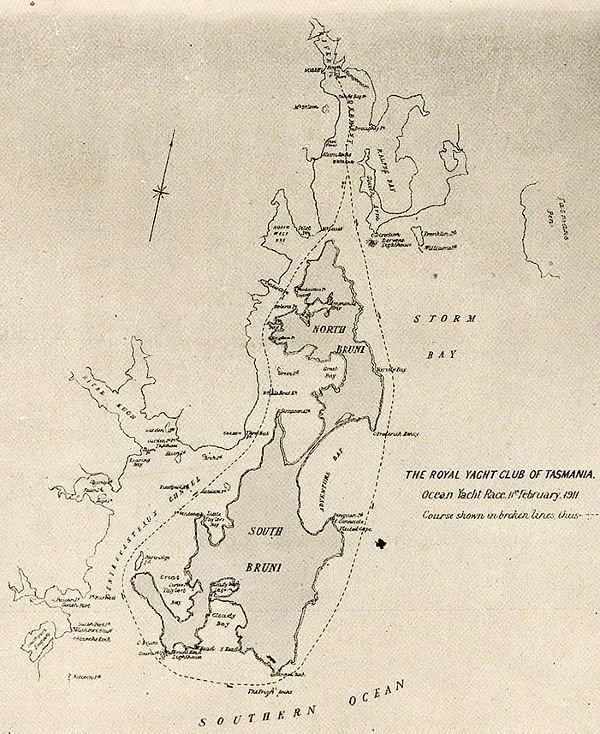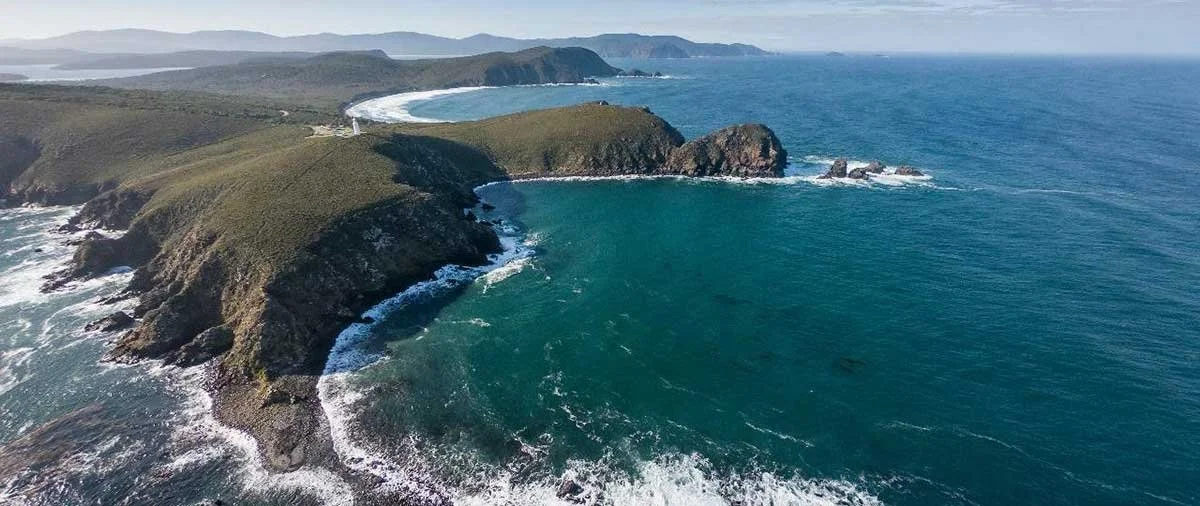Anti Clockwise Around Bruny
This Saturday 16 boats will head south down the Derwent River for the 97th running of the Bruny Island Race. It’s an 89 mile circuit that was first sailed in March 1898 and was originally called The Ocean Race. There seems to be some differences of opinion as to whether this is Australia’s oldest ocean race. The Rudder Cup from Melbourne to the Tamar River has made a claim on the title, but if the Bruny Island race first happened in 1898 then surely the Southern Tasmanians have a fair claim? Perhaps the dispute is around the word “Ocean”. While the first half of the race down the D’Entrecasteaux Channel is protected water sailing, those who have seen an angry Storm Bay would be surely descrice this as “Ocean Sailing” as the account below from Mercury in 1902 testifies!
THE LOSS OF THE MABEL. Tuesday 25th February 1902 - from the Mercury Newspaper.
The crew of the yacht Mabel, whose vessel was lost in Cloudy Bay (south end of Bruni Island), on Sunday morning last, while competing in the Ocean Race under the auspices of the Derwent Yacht Club, arrived in Hobart by the S.S. Lottah at 7.15 o'clock on Monday evening, having been picked up at Taylor Bay. They were met by a representative gathering of yachtsmen, about 50 in number, greeted with hearty cheering, and congratulated upon their escape.
The crew of the Mabel comprised Mesons. A. A. Wilson, W. Eady (owners), G. Cheverton, E. Maher, P. Hallam, and H. Glann. Upon inquiry it was found that the party had been through a most trying and thrilling experience, and had a very, narrow escape indeed from being drowned.
The story of the loss of the craft is well told by Mr. Wilson. On being interviewed by a "Mercury" representative, he said:-"We were going through the Friars on Saturday night, and the weather became very thick, with hard southerly rain squalls. We took in our topsail and lowered our staysail. Just after getting to the Friars we saw the Volant turn round, and shape a course for home.
We went round, and stood out to sea on the port tack. There was a fearful sea on, big curling billows continually breaking over us, but still the yacht was going well, and we expected no danger. Before we went round I should have mentioned that we double-reefed the main-sails. While standing out to sea, one of the chaps went below, and found a lot of water in, and got a bucket to bail out. I had a look, and seeing so much water in, knew something had gone wrong, and that the craft was foundering. The only chance for us then was to square away for Cloudy Bay. We had about three miles to run. Bailing was done with a bucket, but the water continued to gain on us. We re-set the staysail to get the yacht through as fast as possible, as it was painfully evident to us that we needed every minute to reach the shore. On nearing the shore in Cloudy Bay the craft gradually sank until she settled on the rocks. There was a heavy sea rolling in, and the yacht was soon smashed up. All that now remains of her are a few ribs.
"We managed to get ashore safely, as the waves receded. That was about a quarter past two on Sunday morning. It had ceased to rain, and we lighted a fire and waited for daylight. When that came, we found ourselves in a rather unconsoling predicament, we being surrounded by high cliffs, very difficult of ascent. We were told subsequently by the lighthouse keeper that the cliffs were 400ft. in height. I climbed up a little I first by standing on one of my mate's shoulders, then I pulled Cheverton and Maher up by means of a 'bluey', then it took us about four hours to reach the top. The three of us then went across to the lighthouse (to get assistance for Eady, Hallam, and Glann. We got to the lighthouse about 7.30am., and on hearing our story Mr. Hawkins, the keeper, took a long line, and went to the rescue of our mates. He climbed down the cliffs, and found that the remainder of the crew were not there, and after making a search he returned. The others had managed to scale the cliffs, and reached the lighthouse at about 2.20pm.
In conclusion, Mr Wilson said they could not speak too highly of the very considerate and kindly treatment which they received at the lighthouse, and he desired to express his deep thanks therefor. Mr Wilson is of opinion that one of the garboard strakes must have gone to
cause the leak in the yacht. He added had the yacht gone but five minutes sooner all must have been drowned. The Mabel was a 28ft. yacht, and was built about 1886. Nothing was saved from the wreck. Mr Glann lost £2, Mr Wilson is suffering from a sprained ankle, and Mr. Cheverton from an injury to his rib and all of them more or less from shock.
Bruny Lighthouse with Mabel Bay behind
There are no timber boats entered in this years fleet and with a relatively benign forcast for 2024, we are not expecting repeats of the MABEL’s demise.




